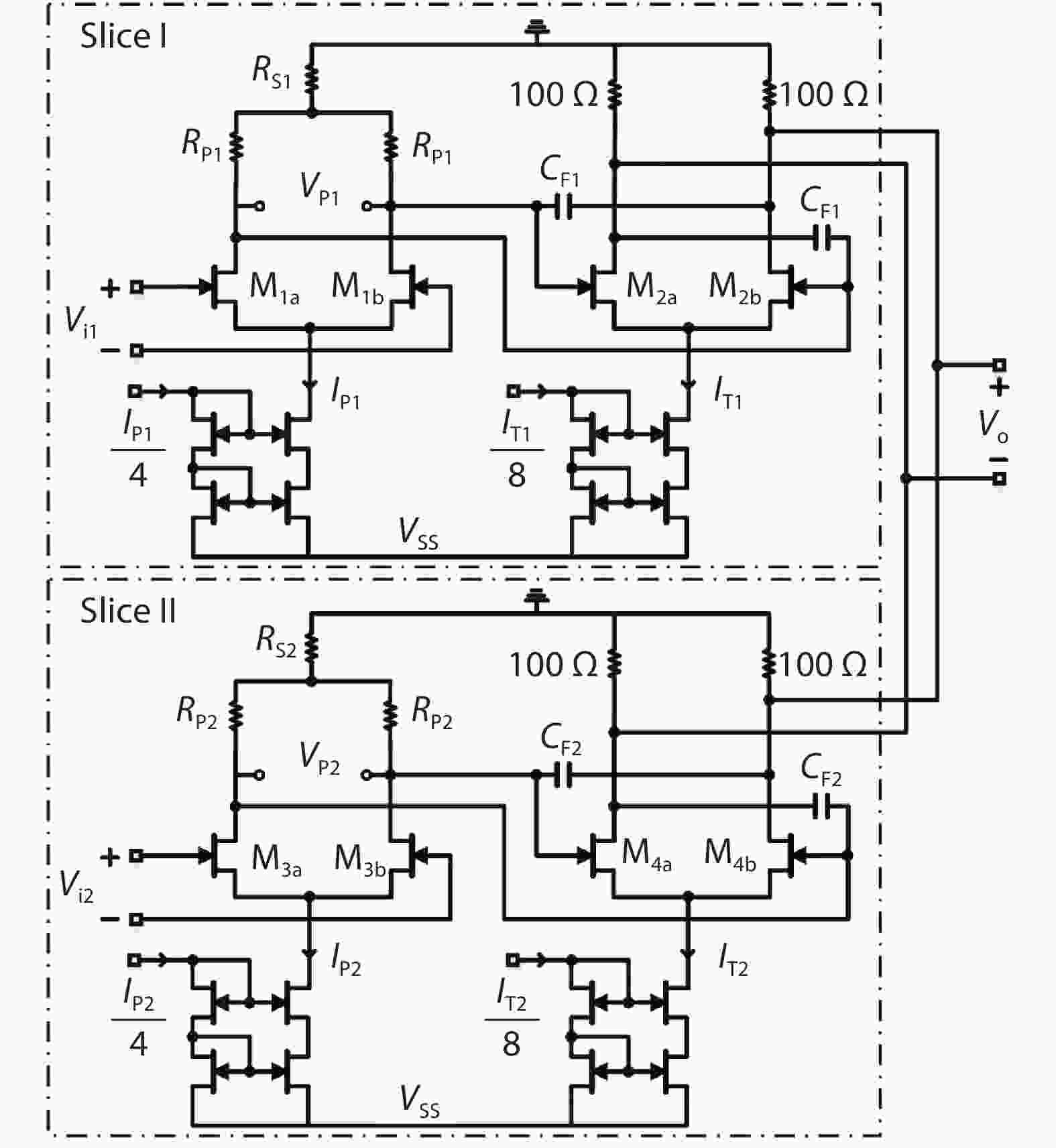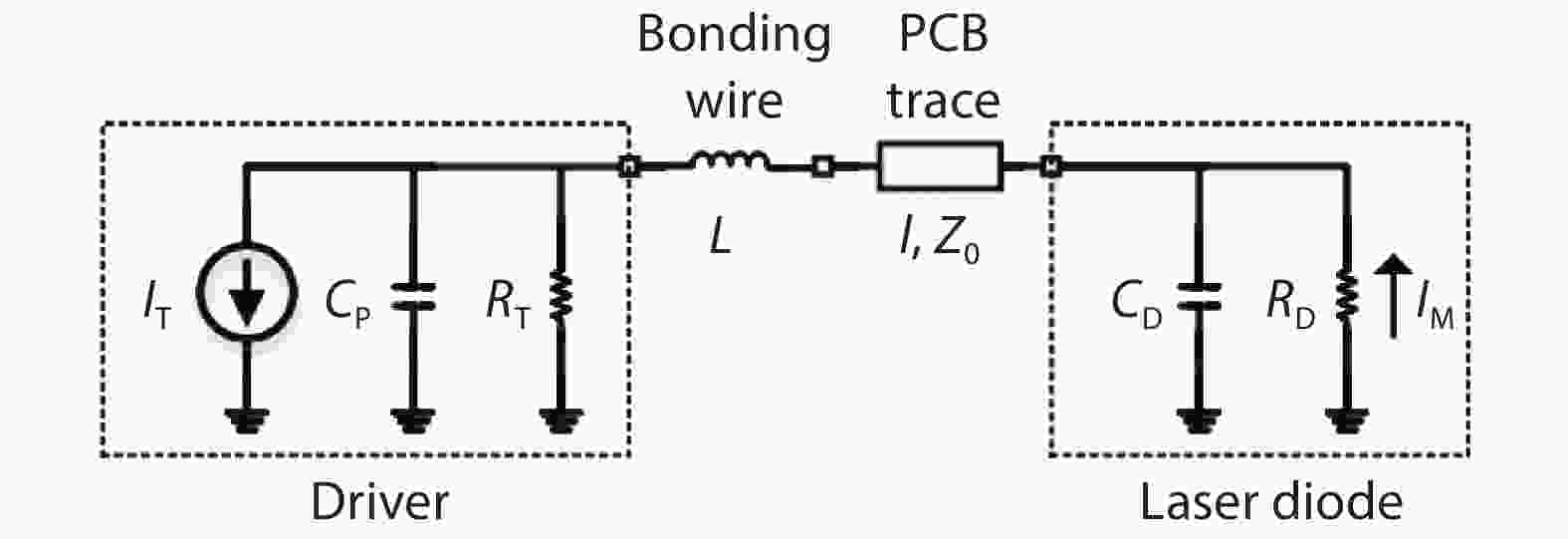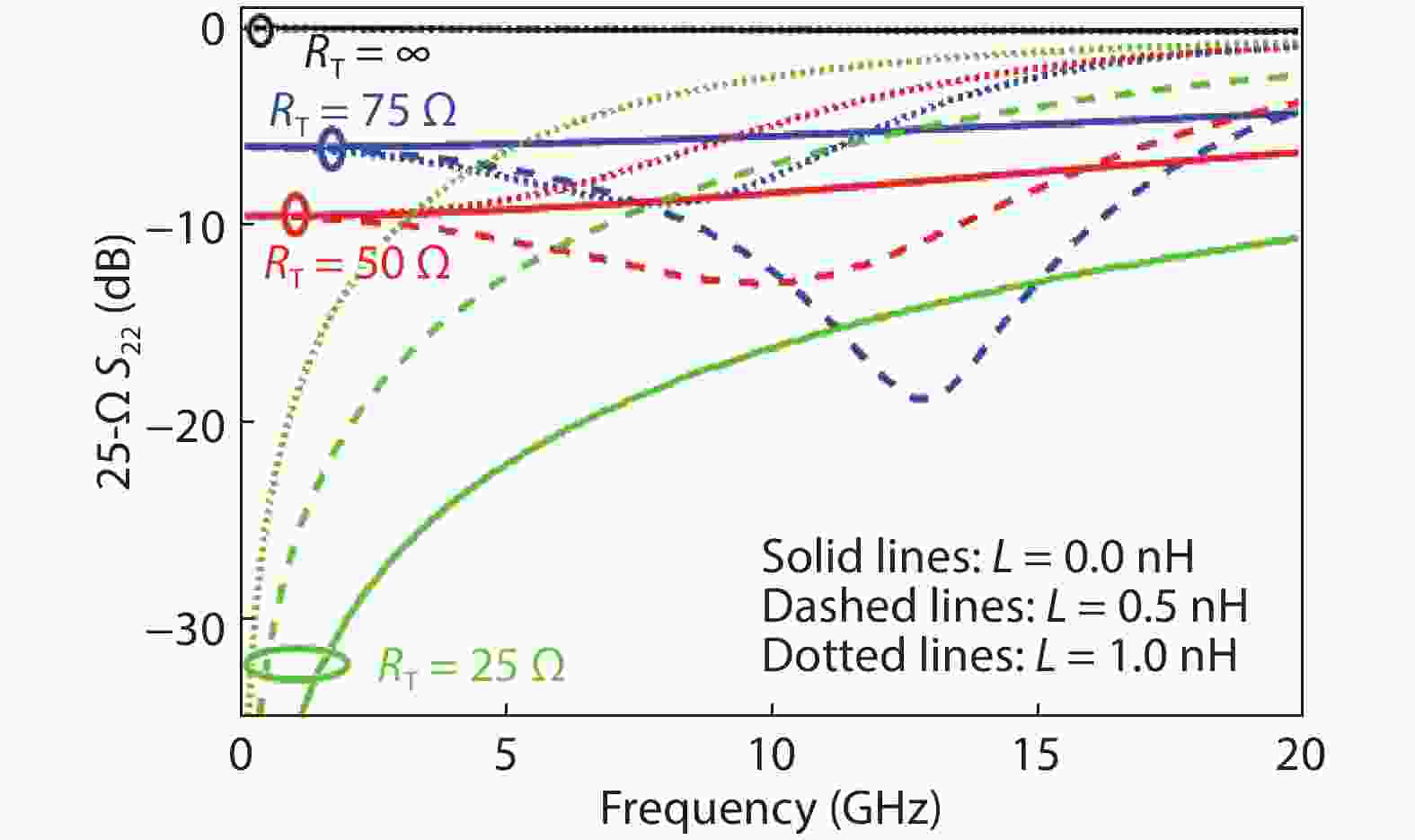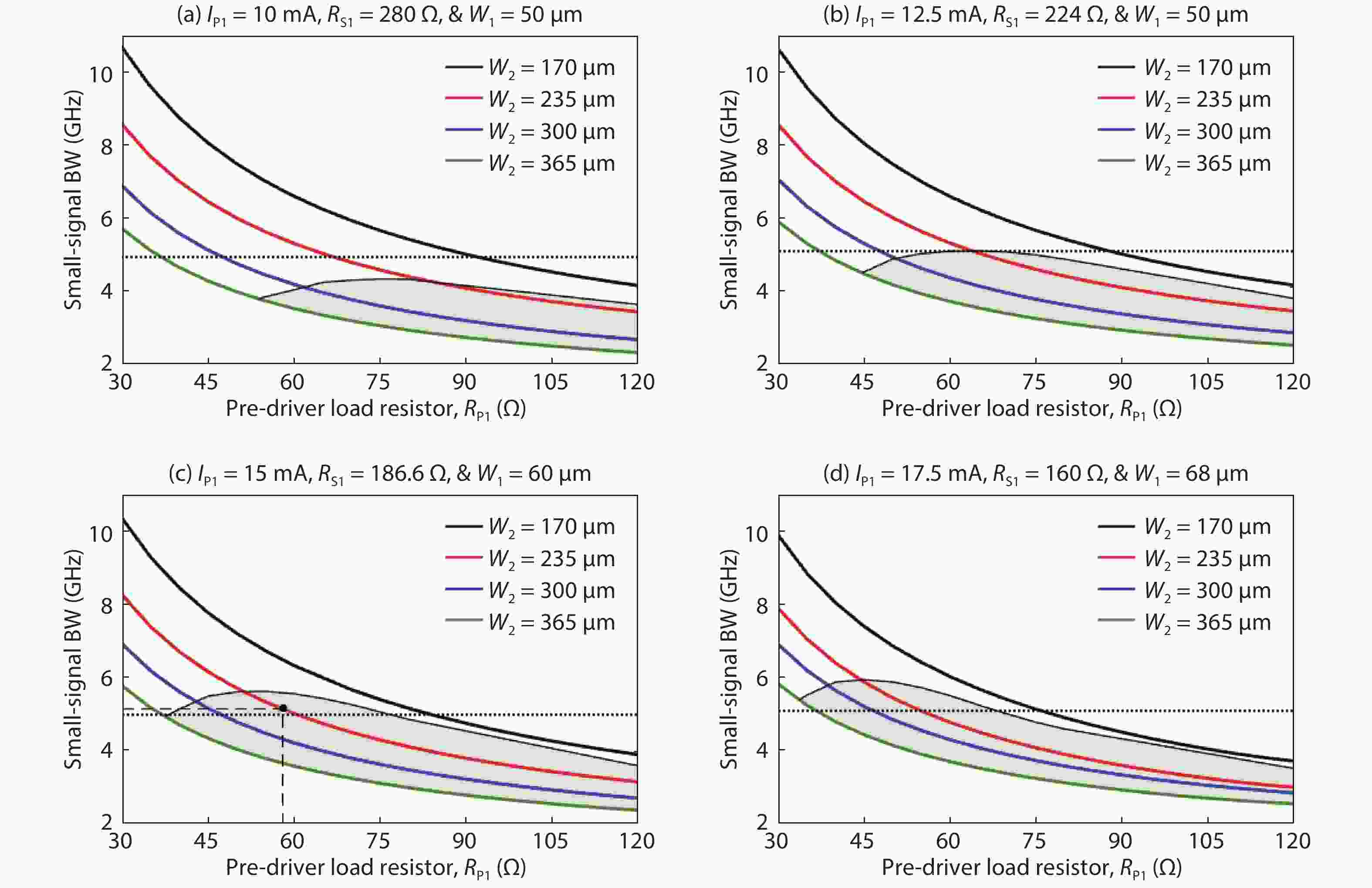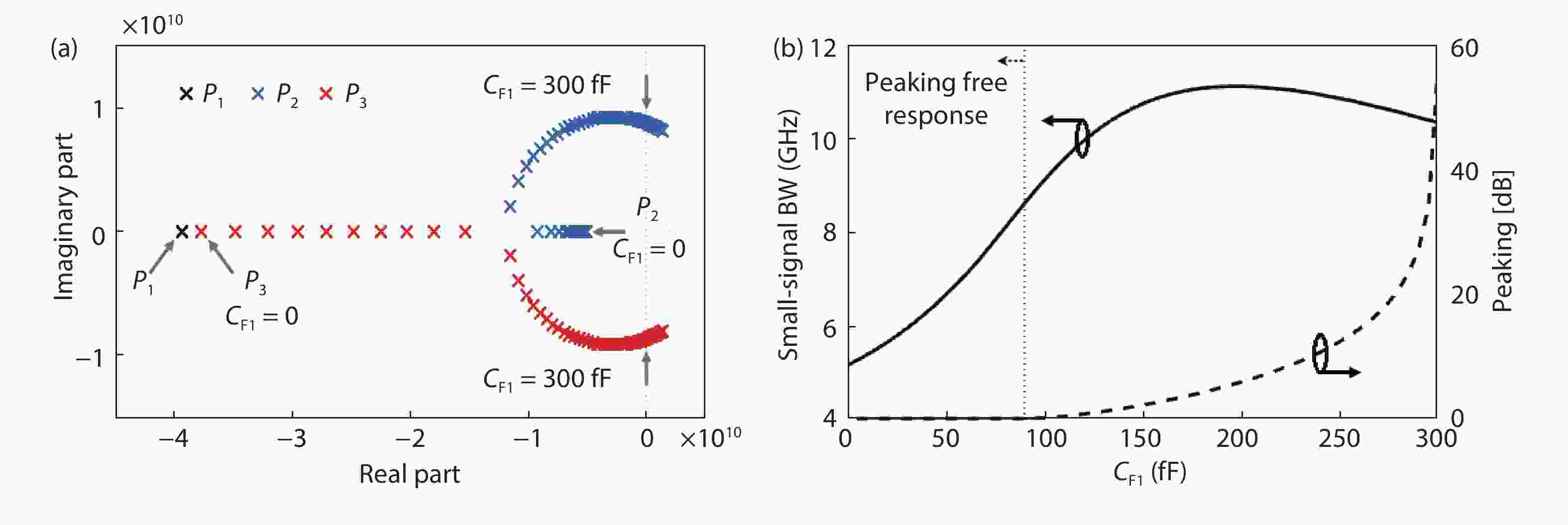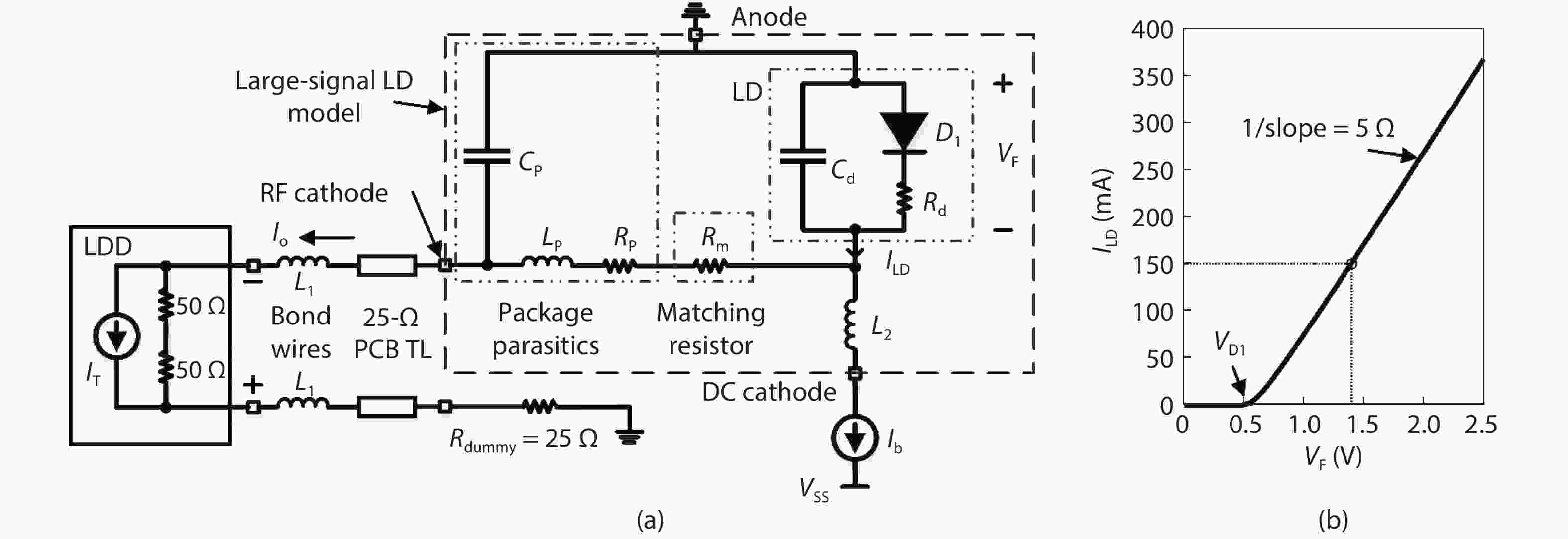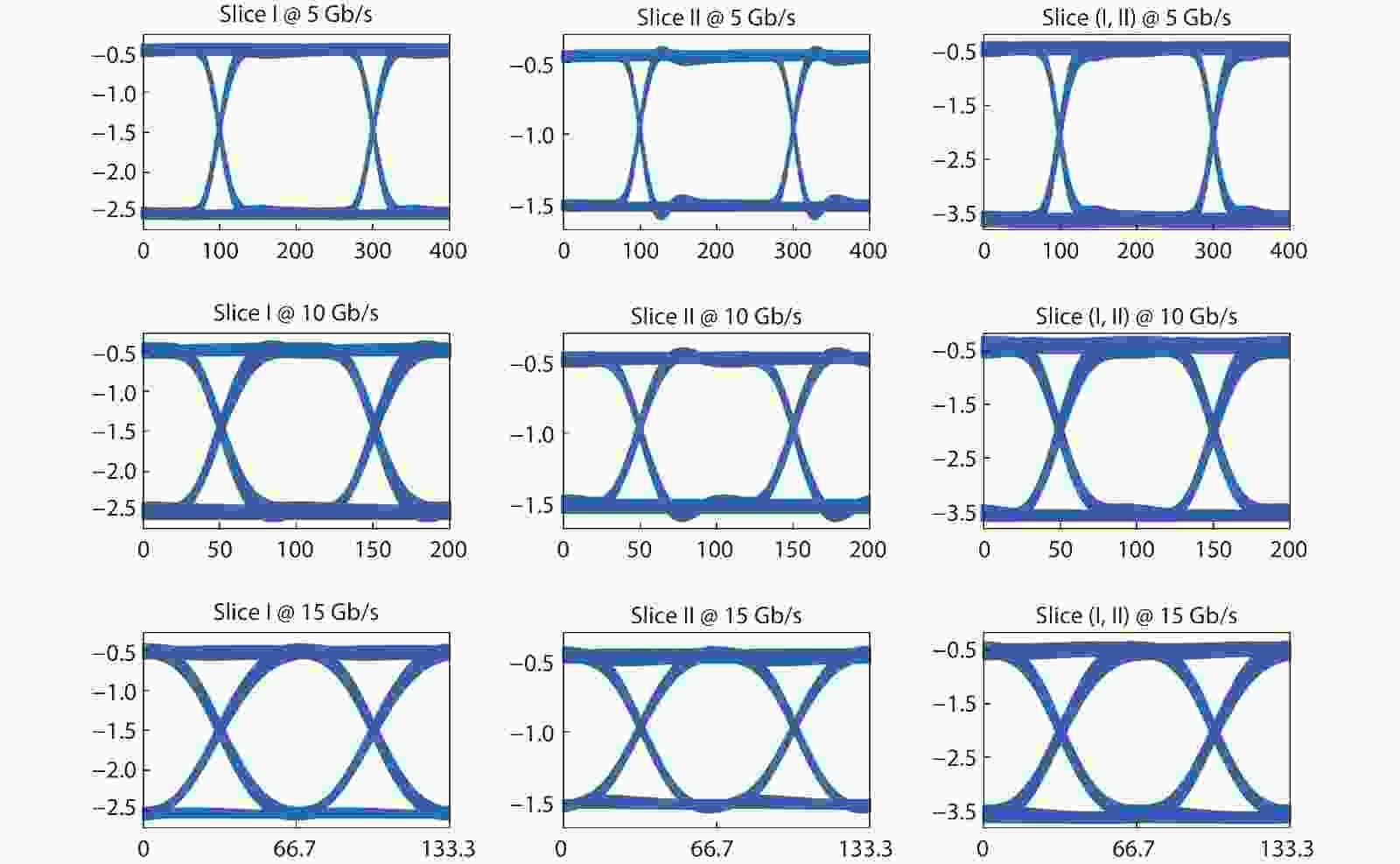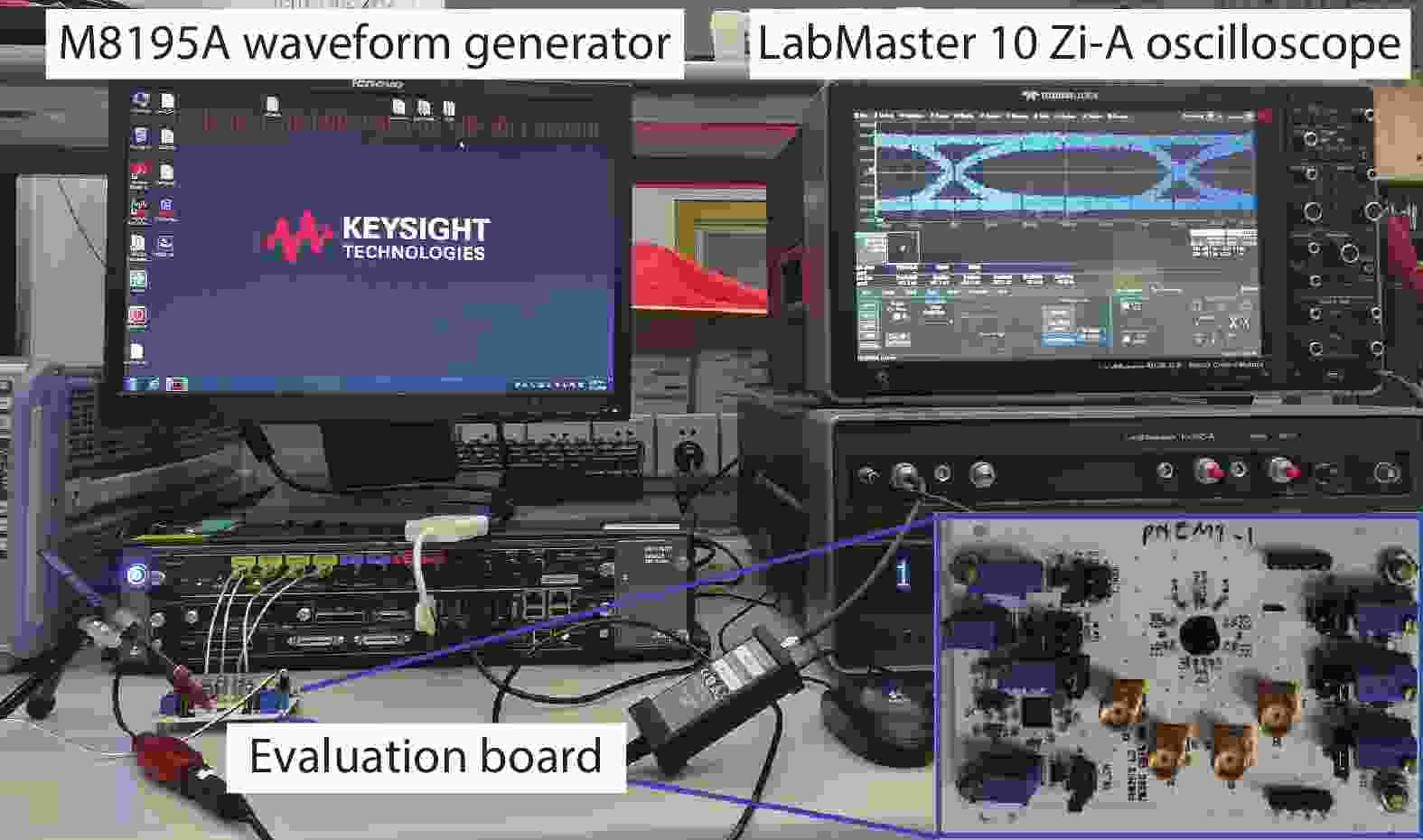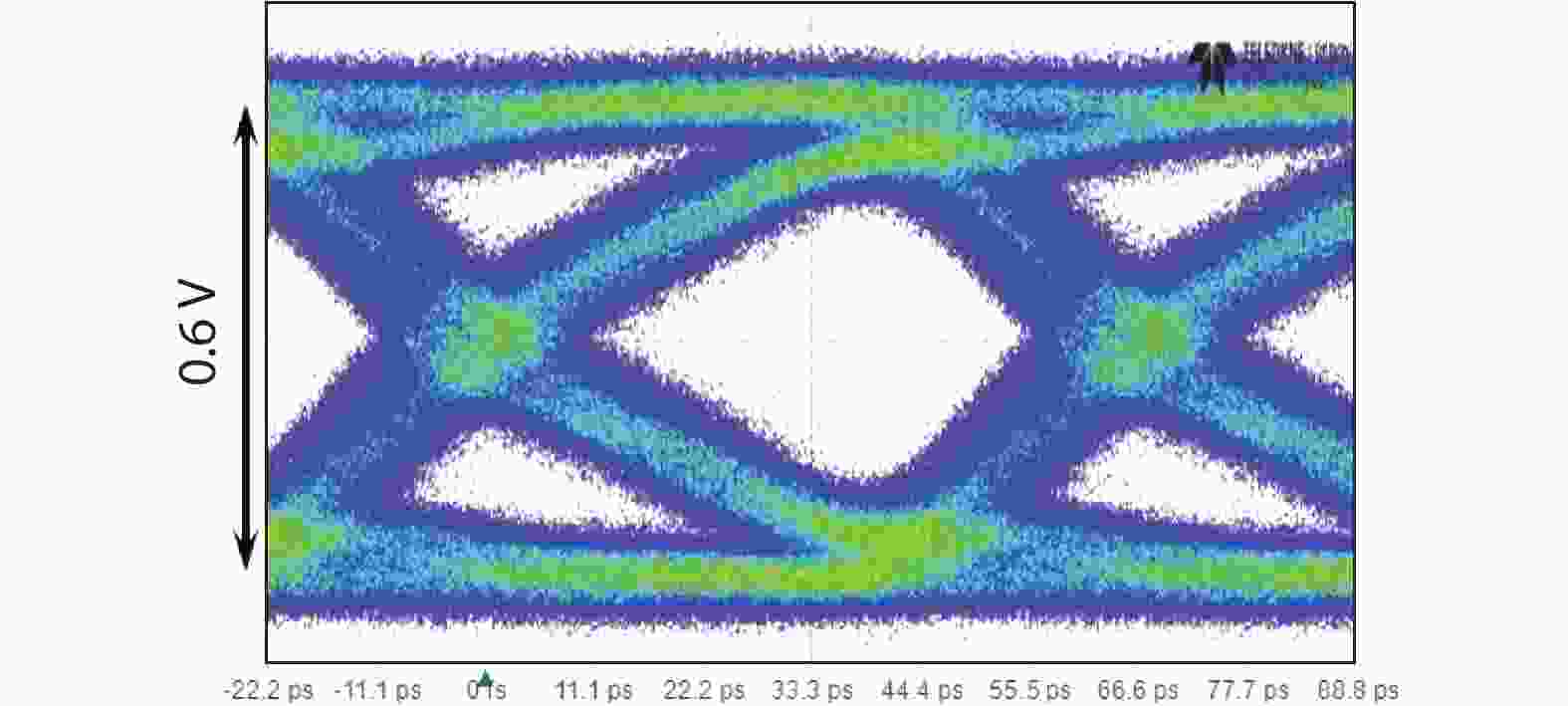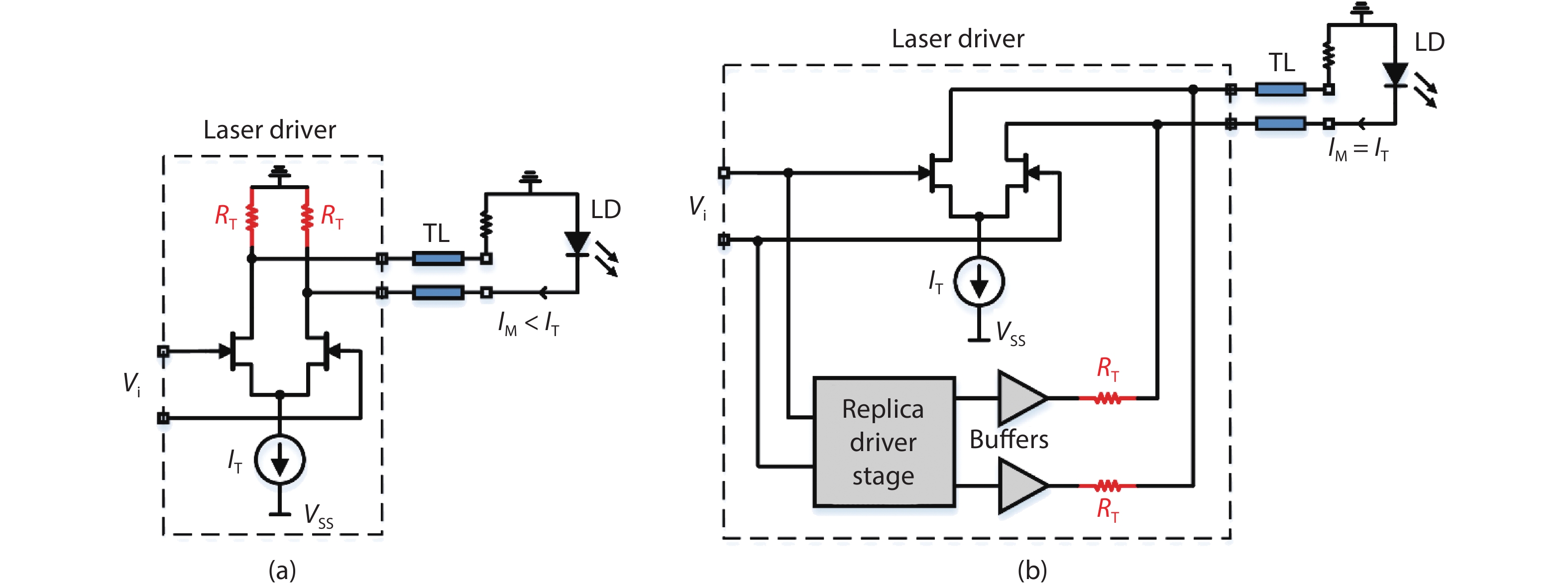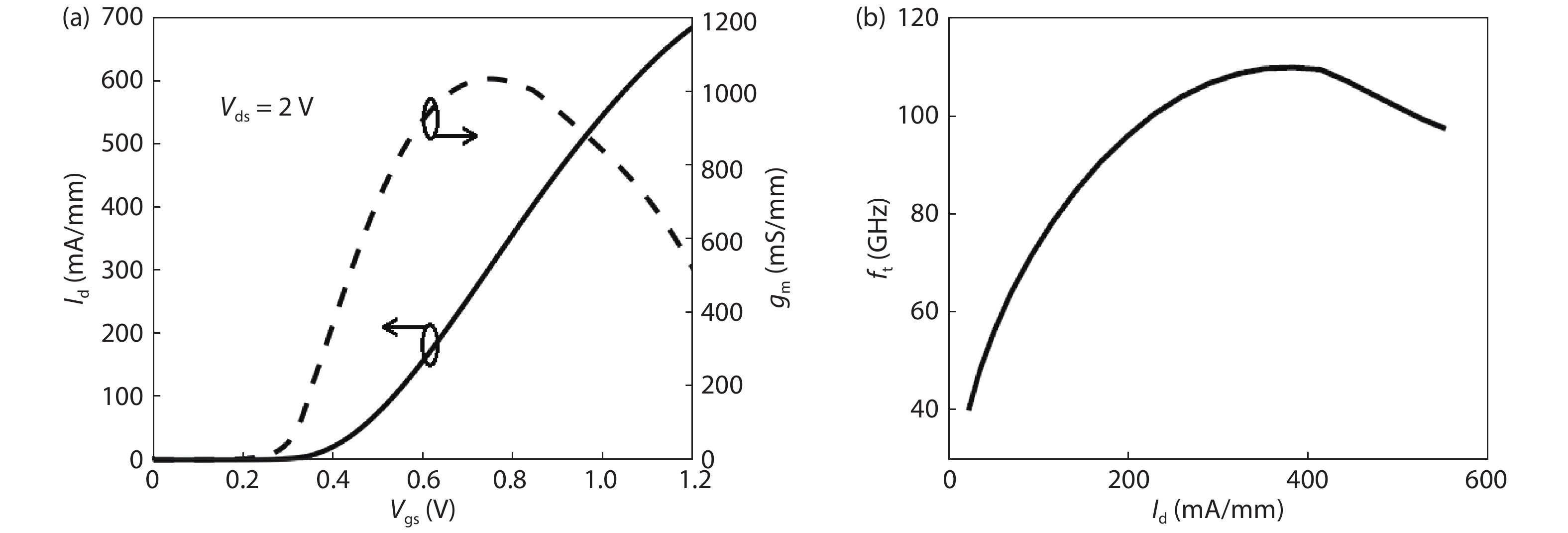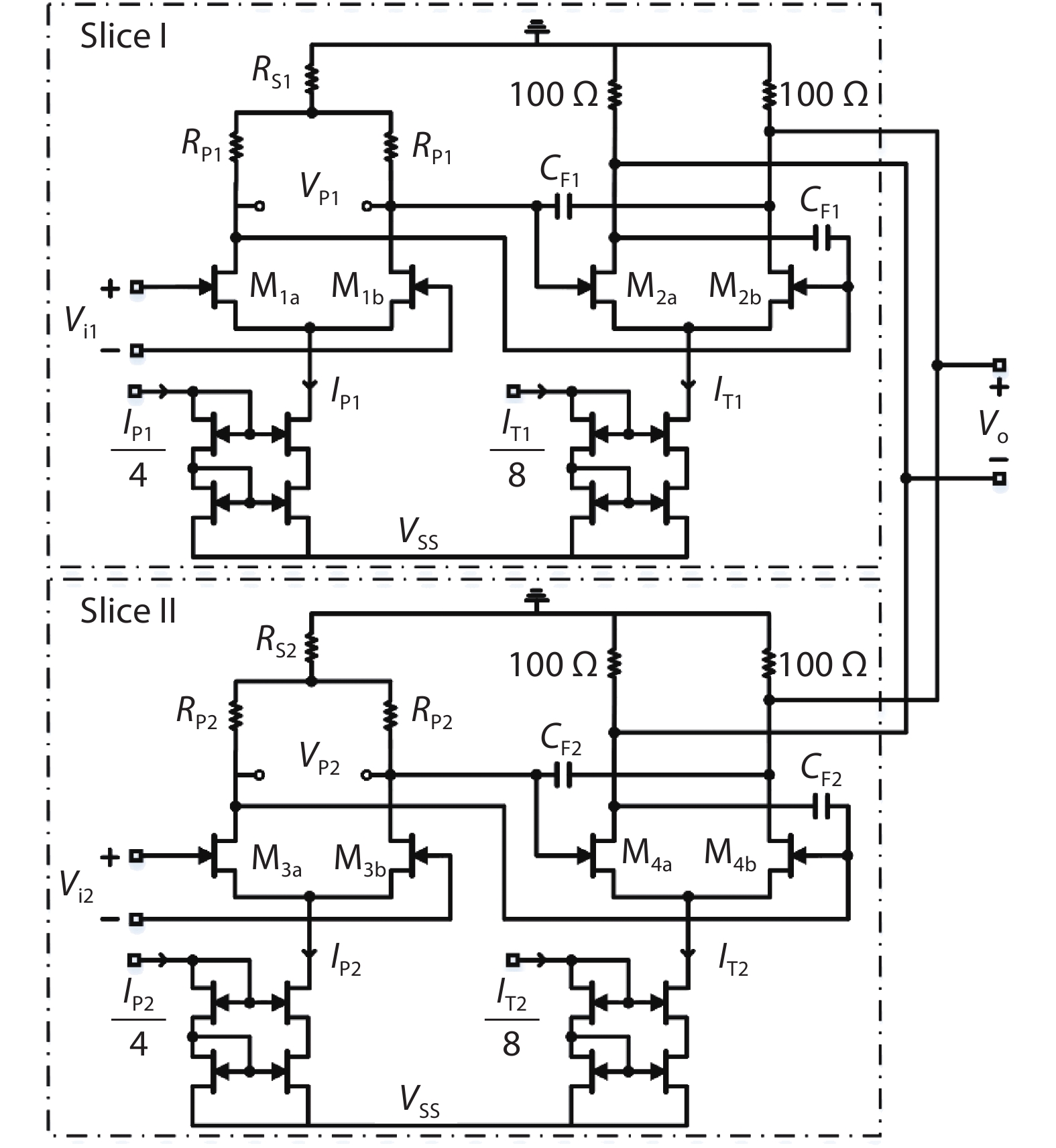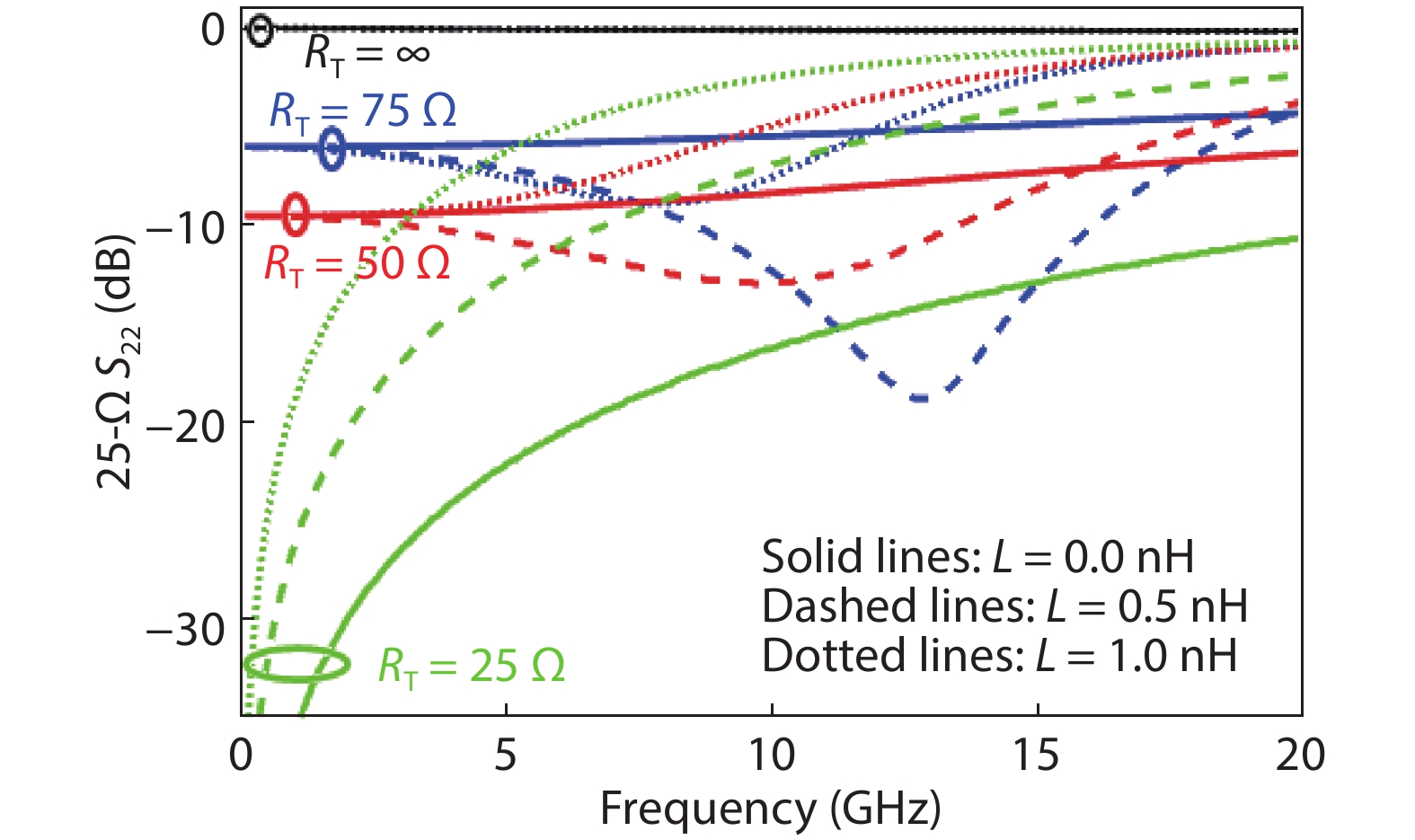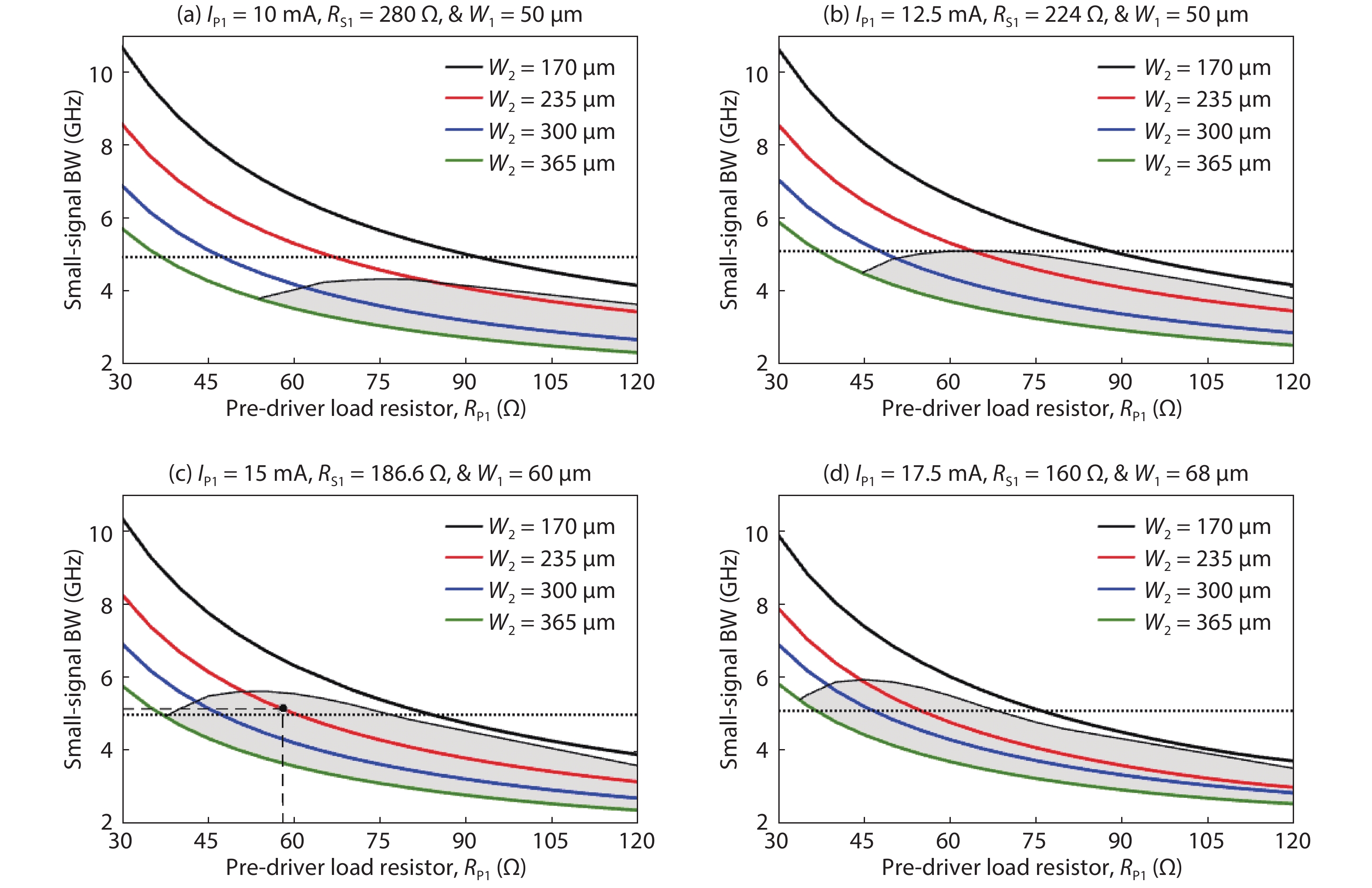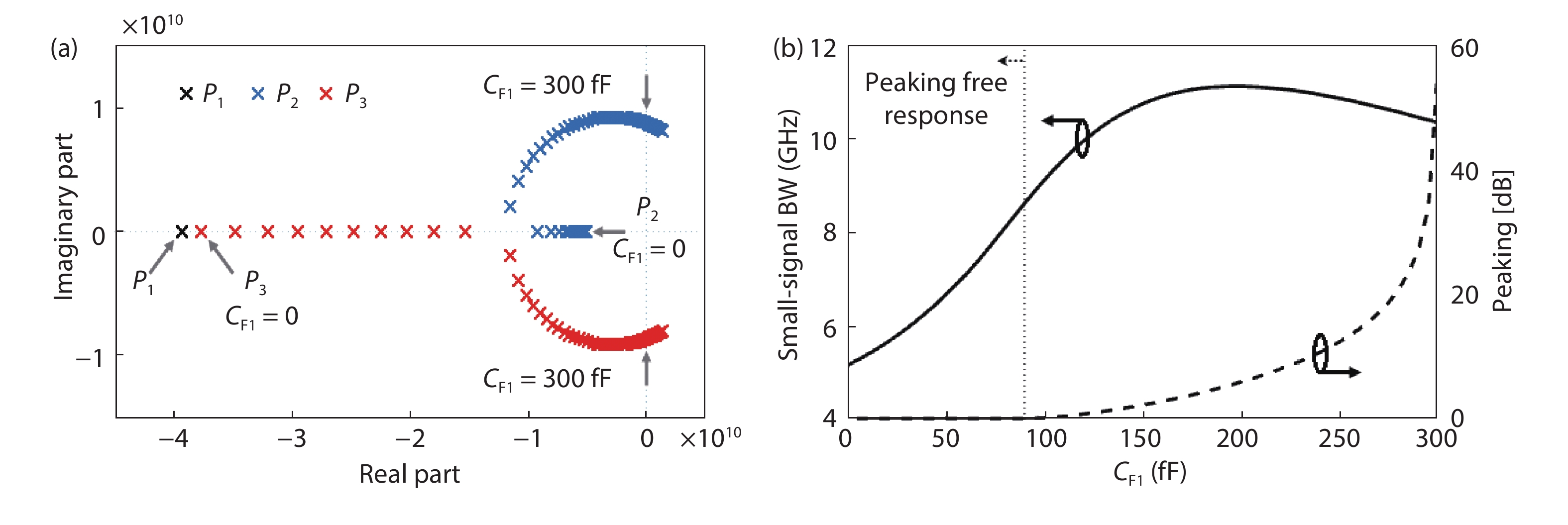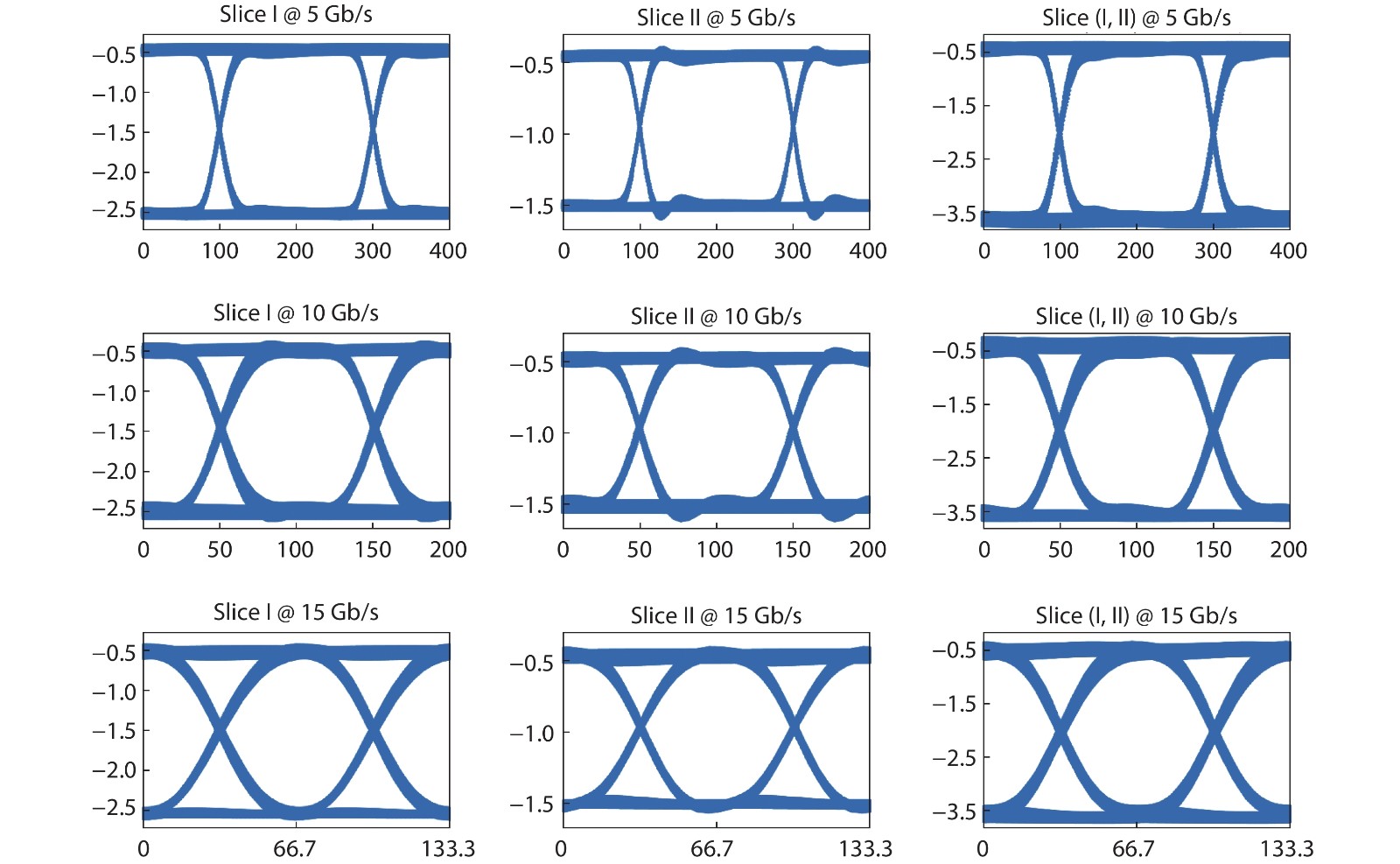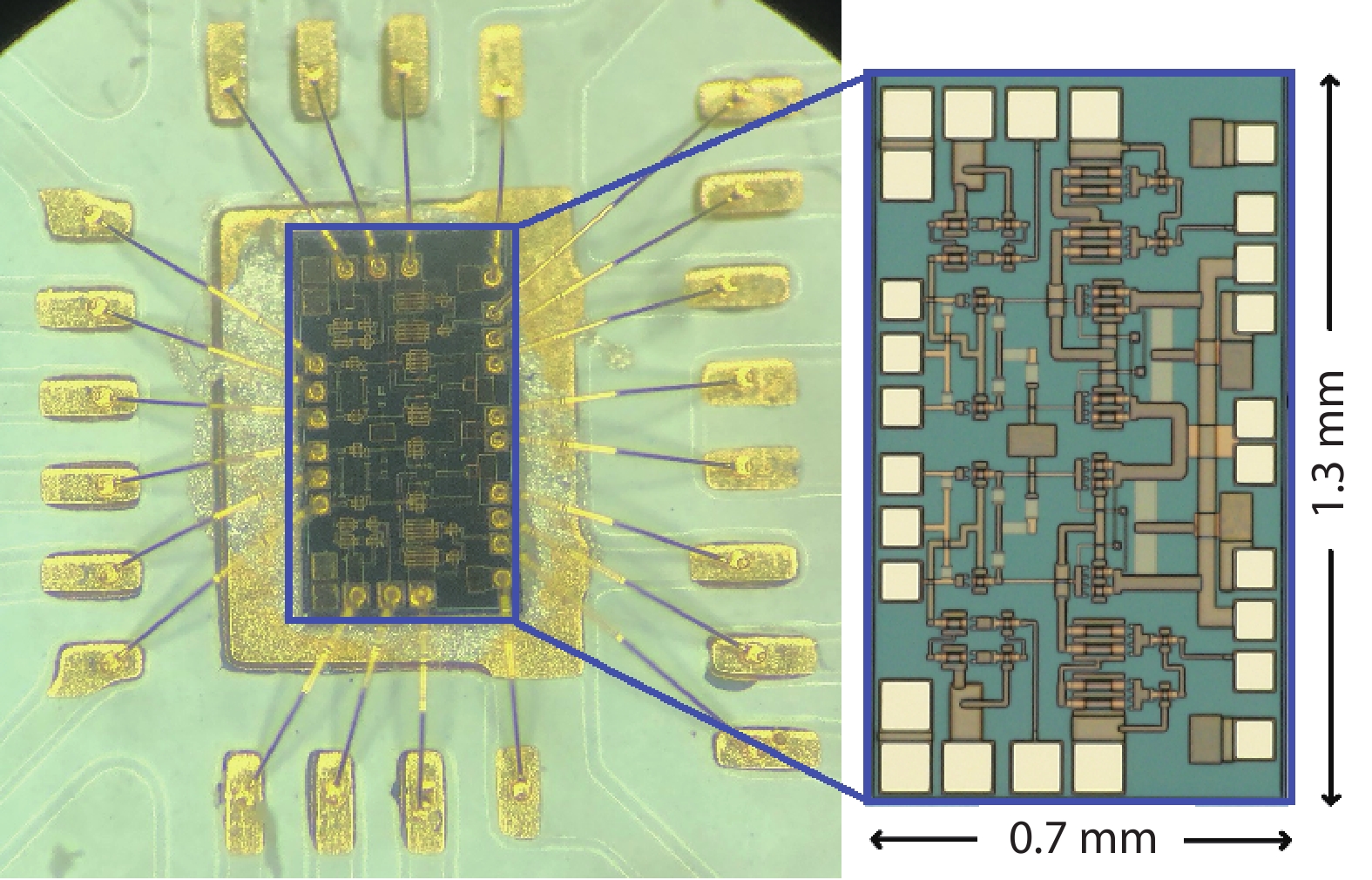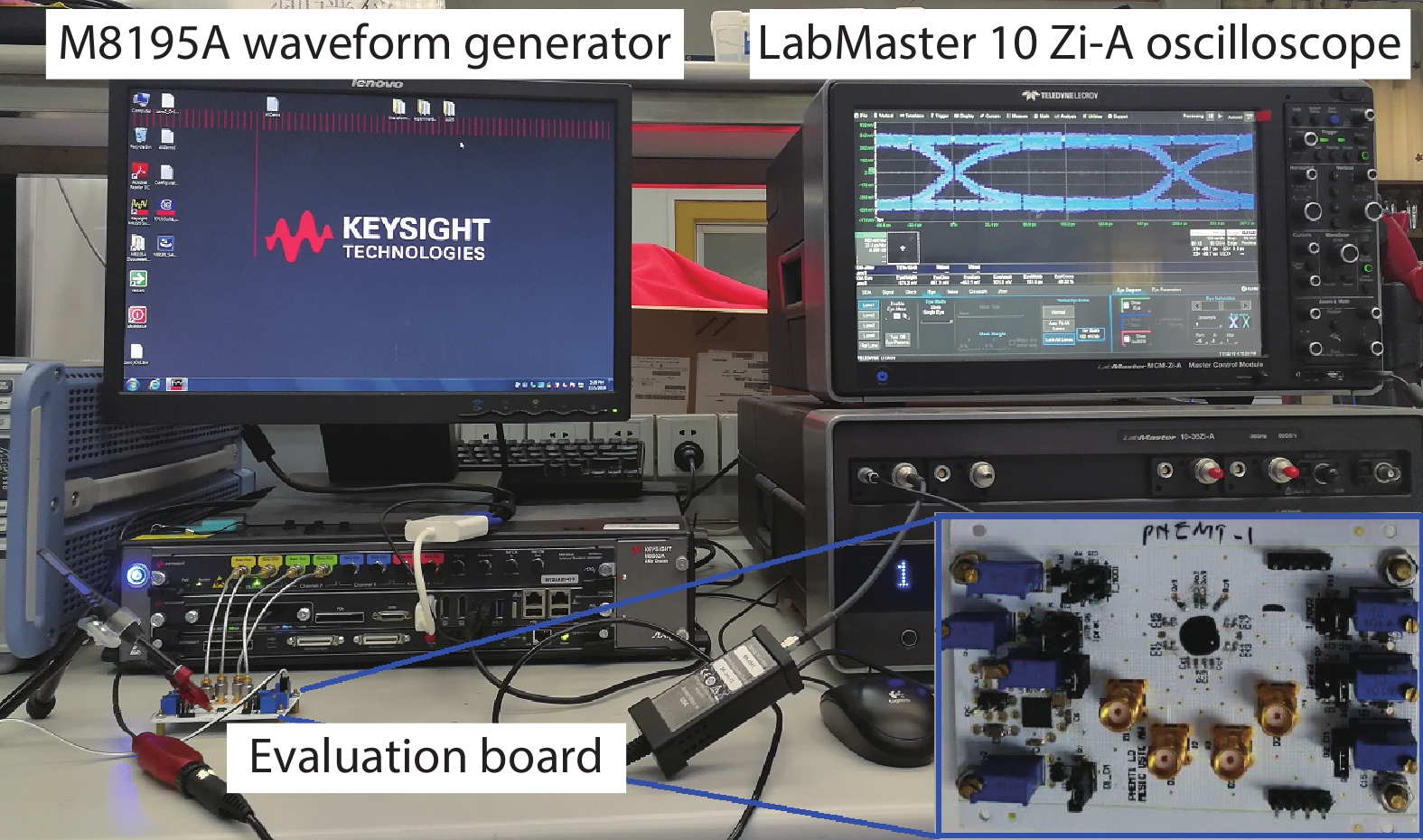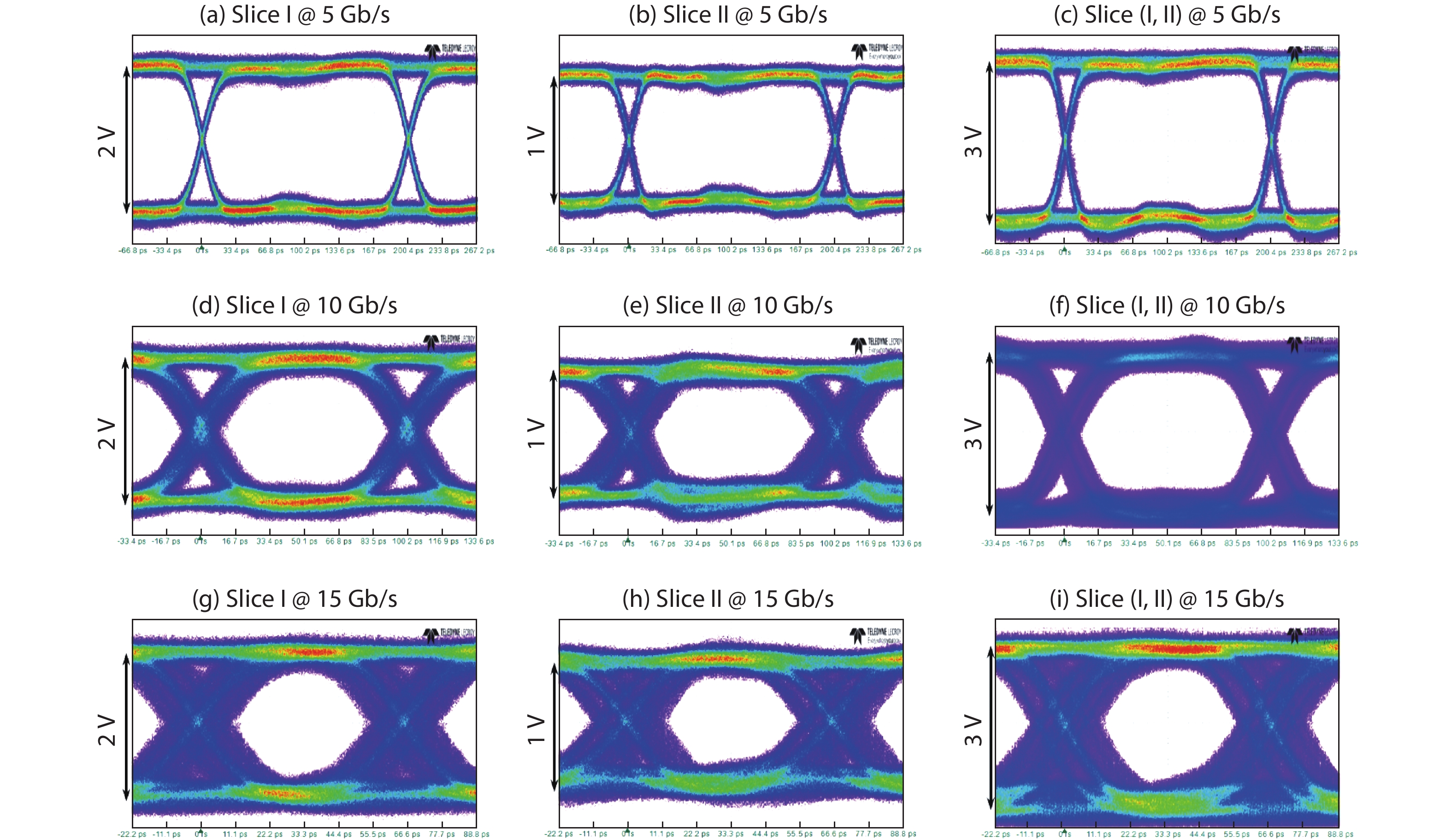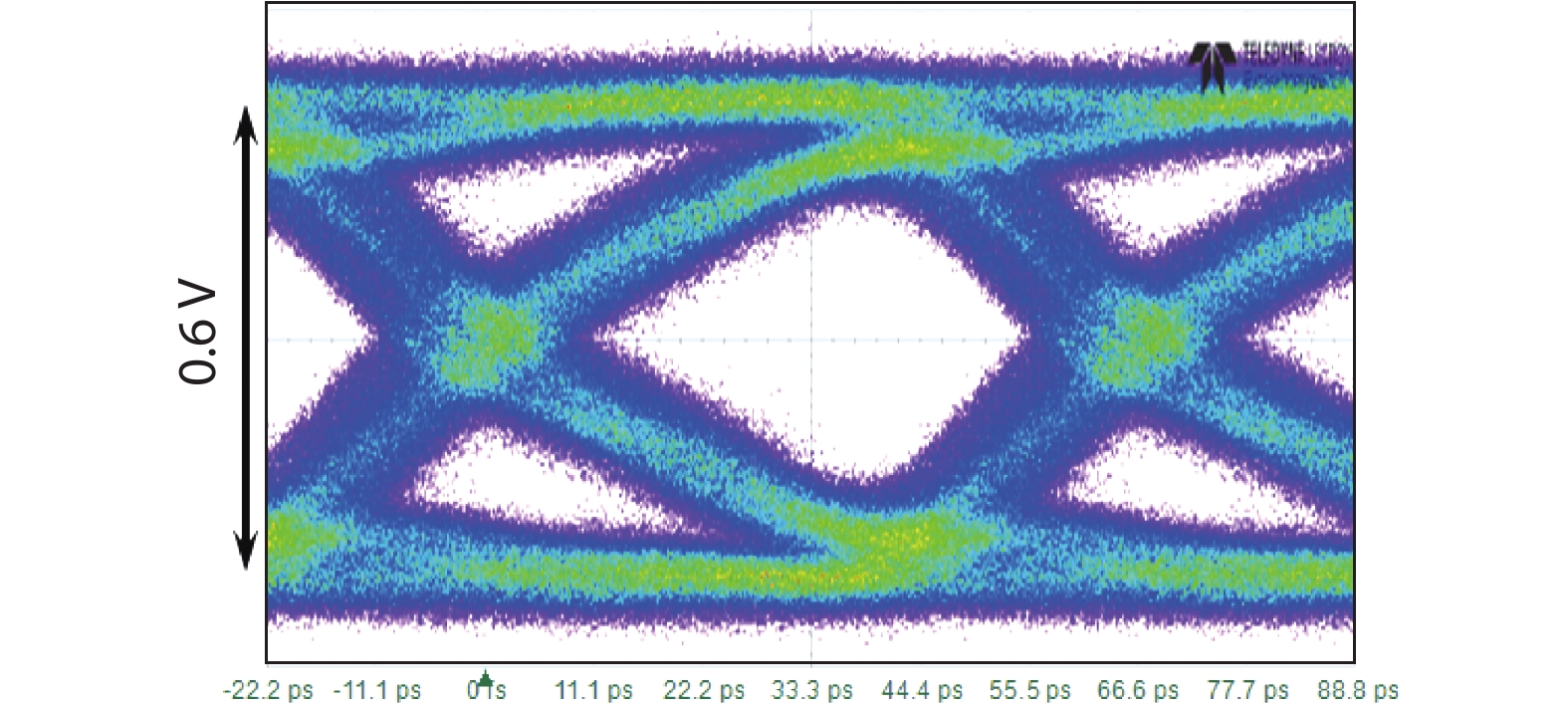| Citation: |
Ahmed Wahba, Lin Cheng, Fujiang Lin. A 15 Gbps-NRZ, 30 Gbps-PAM4, 120 mA laser diode driver implemented in 0.15-µm GaAs E-mode pHEMT technology[J]. Journal of Semiconductors, 2021, 42(7): 072401. doi: 10.1088/1674-4926/42/7/072401
A Wahba, L Cheng, F Lin, A 15 Gbps-NRZ, 30 Gbps-PAM4, 120 mA laser diode driver implemented in 0.15-µm GaAs E-mode pHEMT technology[J]. J. Semicond., 2021, 42(7): 072401. doi: 10.1088/1674-4926/42/7/072401.
Export: BibTex EndNote
|
A 15 Gbps-NRZ, 30 Gbps-PAM4, 120 mA laser diode driver implemented in 0.15-µm GaAs E-mode pHEMT technology
doi: 10.1088/1674-4926/42/7/072401
More Information-
Abstract
This paper presents the design and testing of a 15 Gbps non-return-to-zero (NRZ), 30 Gbps 4-level pulse amplitude modulation (PAM4) configurable laser diode driver (LDD) implemented in 0.15-µm GaAs E-mode pHEMT technology. The driver bandwidth is enhanced by utilizing cross-coupled neutralization capacitors across the output stage. The output transmission-line back-termination, which absorbs signal reflections from the imperfectly matched load, is performed passively with on-chip 50-Ω resistors. The proposed 30 Gbps PAM4 LDD is implemented by combining two 15 Gbps-NRZ LDDs, as the high and low amplification paths, to generate PAM4 output current signal with levels of 0, 40, 80, and 120 mA when driving 25-Ω lasers. The high and low amplification paths can be used separately or simultaneously as a 15 Gbps-NRZ LDD. The measurement results show clear output eye diagrams at speeds of up to 15 and 30 Gbps for the NRZ and PAM4 drivers, respectively. At a maximum output current of 120 mA, the driver consumes 1.228 W from a single supply voltage of –5.2 V. The proposed driver shows a high current driving capability with a better output power to power dissipation ratio, which makes it suitable for driving high current distributed feedback (DFB) lasers. The chip occupies a total area of 0.7 × 1.3 mm2. -
References
[1] Razavi B. Design of integrated circuits for optical communications. 2nd ed. Hoboken, New Jersey: WILEY, 2012[2] Morley S. A 3 V 10.7 Gb/s differential laser diode driver with active back-termination output stage. 2005 IEEE International Solid-State Circuits Conference, 2005, 220[3] Tsai C M, Chiu M C. A 10Gb/s laser-diode driver with active back-termination in 0.18 μm CMOS. 2008 IEEE International Solid-State Circuits Conference - Digest of Technical Papers, 2008, 222[4] Galal S, Razavi B. 10-Gb/s limiting amplifier and laser/modulator driver in 0.18-μm CMOS technology. IEEE J Solid-State Circuits, 2003, 38, 2138 doi: 10.1109/JSSC.2003.818567[5] Chiang P C, Jiang J Y, Hung H W, et al. 4 × 25 Gb/s transceiver with optical front-end for 100 GbE system in 65 nm CMOS technology. IEEE J Solid-State Circuits, 2015, 50, 573 doi: 10.1109/JSSC.2014.2365700[6] Takemoto T, Matsuoka Y, Sugiyama Y, et al. A 50-Gb/s NRZ-modulated optical transmitter based on a DFB-LD and a 0.18-μm SiGe BiCMOS LD driver. Optical Fiber Communication Conference, 2015, 1[7] Huang T, Wang Z G, Zhu E, et al. 24 Gb/s laser/modulator driver IC using 0.2 μm gate length PHEMTs. ESSCIRC 2004 - 29th European Solid-State Circuits Conference, 2003, 277[8] Takemoto T, Yamashita H, Yuki F, et al. A 25-Gb/s 2.2-W 65-nm CMOS optical transceiver using a power-supply-variation-tolerant analog front end and data-format conversion. IEEE J Solid-State Circuits, 2014, 49, 471 doi: 10.1109/JSSC.2013.2291099[9] Ransijn H, Salvador G, Daugherty D D, et al. A 10-Gb/s laser/modulator driver IC with a dual-mode actively matched output buffer. IEEE J Solid-State Circuits, 2001, 36, 1314 doi: 10.1109/4.944657[10] Fattaruso J W, Sheahan B. A 3-V 4.25-Gb/s laser driver with 0.4-V output voltage compliance. IEEE J Solid-State Circuits, 2006, 41, 1930 doi: 10.1109/JSSC.2006.875288[11] Yin B Z, Qi N, Shi J B, et al. A 32Gb/s-NRZ, 15GBaud/s-PAM4 DFB laser driver with active back-termination in 65 nm CMOS. 2017 IEEE Radio Frequency Integrated Circuits Symposium (RFIC), 2017, 264[12] Shi J B, Yin B Z, Qi N, et al. Design techniques for signal reflection suppression in high-speed 25-Gb/s laser drivers in CMOS. IEEE Photonics Technol Lett, 2018, 30, 39 doi: 10.1109/LPT.2017.2773525[13] Miyashita M, Yoshida N, Kojima Y, et al. An AlGaAs/InGaAs pseudomorphic HEMT modulator driver IC with low power dissipation for 10-Gb/s optical transmission systems. IEEE Trans Microw Theory Tech, 1997, 45, 1058 doi: 10.1109/22.598441[14] Bauwelinck J, Chen W, Verhulst D, et al. A high-resolution burst-mode laser transmitter with fast and accurate level monitoring for 1.25 Gb/s upstream GPONs. IEEE J Solid-State Circuits, 2005, 40, 1322 doi: 10.1109/JSSC.2005.848024[15] Umeda Y, Kanda A, Sano K, et al. 10 Gbit/s series-connected voltage-balancing pulse driver with high-speed input buffer. Electron Lett, 2004, 40, 934 doi: 10.1049/el:20045223[16] Chujo N, Takai T, Sugawara T, et al. A 25 Gb/s 65-nm CMOS low-power laser diode driver with mutually coupled peaking inductors for optical interconnects. IEEE Trans Circuits Syst I, 2011, 58, 2061 doi: 10.1109/TCSI.2011.2163982[17] Schow C L, Doany F E, Chen C, et al. Low-power 16 × 10 Gb/s Bi-directional single chip CMOS optical transceivers operating at < < 5 mW/Gb/s/link. IEEE J Solid-State Circuits, 2009, 44, 301 doi: 10.1109/JSSC.2008.2007439[18] Kromer C, Sialm G, Berger C, et al. A 100-mW 4 × 10 Gb/s transceiver in 80-nm CMOS for high-density optical interconnects. IEEE J Solid-State Circuits, 2005, 40, 2667 doi: 10.1109/JSSC.2005.856575[19] Wahba A, Li X, Xi N, et al. A 10 gb/s, 150 mA laser diode driver with active back-termination in 0.13-µm SOI CMOS technology. 2019 IEEE International Conference on Integrated Circuits, Technologies and Applications, 2019, 91[20] Belfiore G, Henker R, Ellinger F. 90 Gbit/s 4-level pulse-amplitude-modulation vertical-cavity surface-emitting laser driver integrated circuit in 130 nm SiGe technology. 2016 IEEE MTT-S Latin America Microwave Conference (LAMC), 2016, 1[21] Belfiore G, Szilagyi L, Henker R, et al. Design of a 56 Gbit/s 4-level pulse-amplitude-modulation inductor-less vertical-cavity surface-emitting laser driver integrated circuit in 130 nm BiCMOS technology. IET Circuits Devices Syst, 2015, 9, 213 doi: 10.1049/iet-cds.2014.0240[22] Belfiore G, Szilagyi L, Henker R, et al. Common cathode VCSEL driver in 90 nm CMOS enabling 25 Gbit/s optical connection using 14 Gbit/s 850 nm VCSEL. Electron Lett, 2015, 51, 349 doi: 10.1049/el.2014.4217[23] Gray P R, Hurst P J, Lewis S H, et al. Analysis and design of analog integrated circuits. John Wiley & Sons, 2009[24] Säckinger E. Broadband circuits for optical fiber communication. Hoboken, NJ, USA: John Wiley & Sons, Inc., 2005[25] Heydari P, Mohanavelu R. Design of ultrahigh-speed low-voltage CMOS CML buffers and latches. IEEE Trans Very Large Scale Integr VLSI Syst, 2004, 12, 1081 doi: 10.1109/TVLSI.2004.833663[26] Lao Z, Thiede A, Nowotny U, et al. High power modulator driver ICs up to 30 Gb/s with AlGaAs/GaAs HEMTs. IEEE Gallium Arsenide Integrated Circuit Symposium, 1997, 223[27] Zhu N H, Chen C, Pun E Y B, et al. Extraction of intrinsic response from S-parameters of laser diodes. IEEE Photonics Technol Lett, 2005, 17, 744 doi: 10.1109/LPT.2004.842794[28] Chen C, Zhu N, Zhang S, et al. Characterization of parasitics in TO-packaged high-speed laser modules. IEEE Trans Adv Packag, 2007, 30, 97 doi: 10.1109/TADVP.2006.884779[29] Gao J J. Optoelectronic integrated circuit design and device modeling. Chichester, UK: John Wiley & Sons, Ltd, 2010[30] Khafaji M, Pliva J, Henker R, et al. A 42-Gb/s VCSEL driver suitable for burst mode operation in 14-nm bulk CMOS. IEEE Photonics Technol Lett, 2018, 30, 23 doi: 10.1109/LPT.2017.2771952 -
Proportional views






 DownLoad:
DownLoad:


